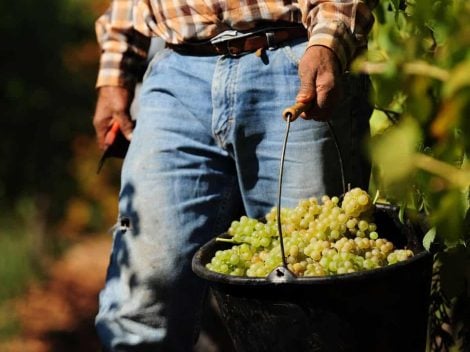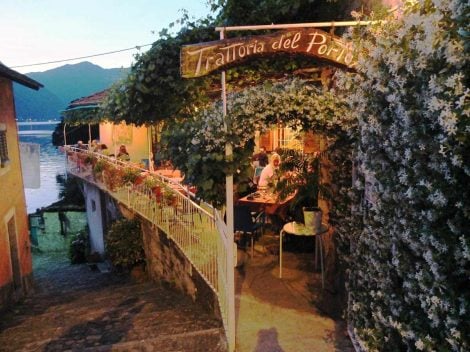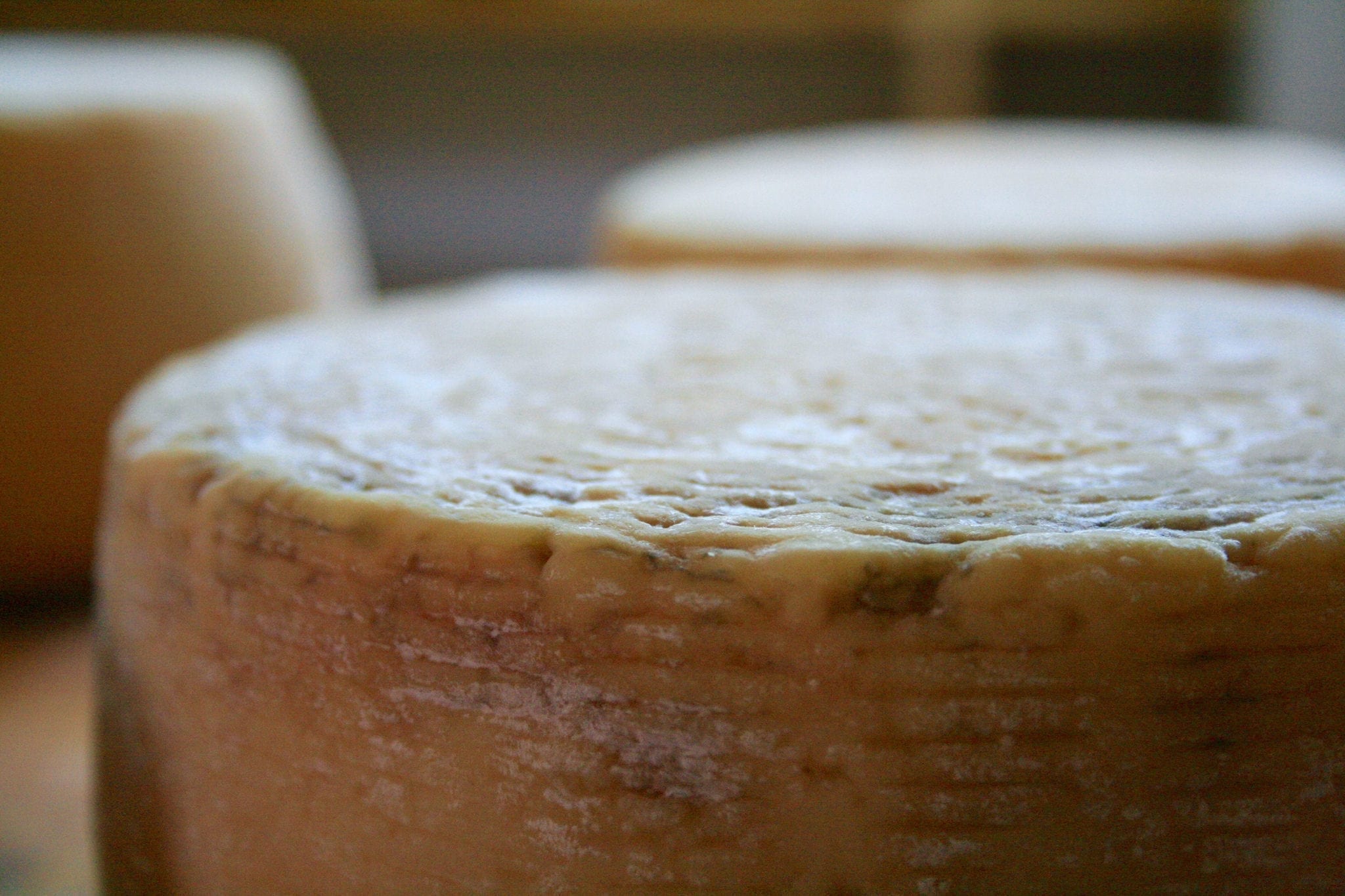
Each Italian region, city and village boasts a vast array of typically local cheeses: each product represents the area’s deep cultural and farming heritage. Here is an alphabetized list of Italy’s most famous cheeses, examined travelling down from the Alps to its deep, southernmost islands.
Northern Italian cheeses
The Alpine regions of Trentino Alto Adige, Valle d’Aosta, Lombardia and Piedmont produce a phenomenal number of unique cheeses. Here are a representative few.
Bagòss, for example, gets its name from the inhabitants of the town of Bagolino (in the Brescia province). It is produced with the milk of the Bruna cow breed. Grassy aromas give way on the palate to almondy notes and a spicy finish that intensifies with aging. The cheese can’t be sold before 12 months but can mature for years. A Slow Food Presidia protects its origin.
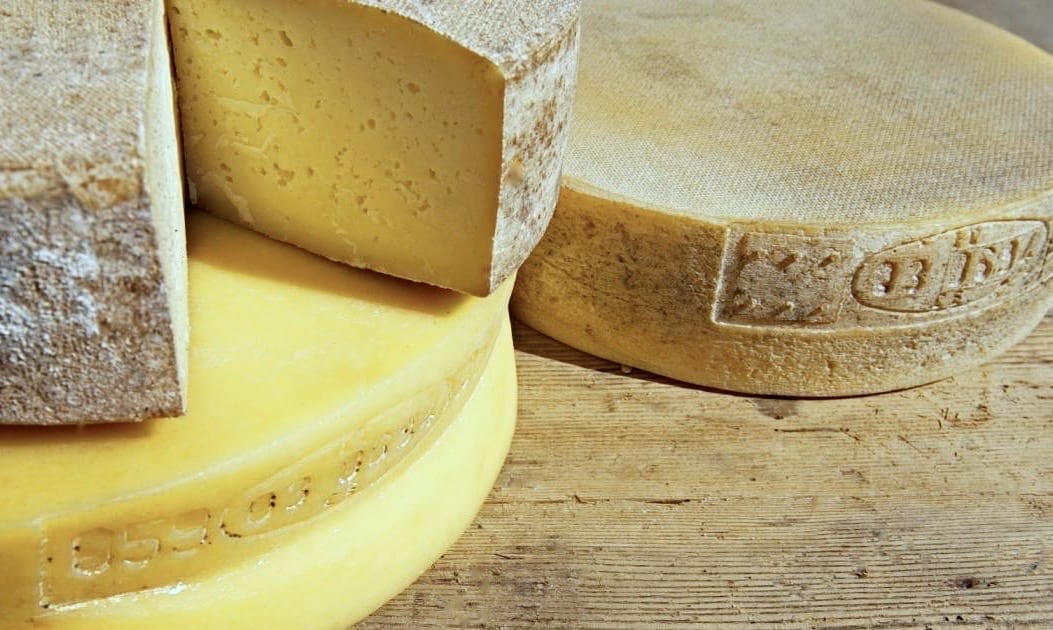
Bitto is an ancient Alpine cheese of the high Valtellina Mountains of Lombardy. Bitto is made with a mix of cow's milk and Orobic goat's milk, a breed that’s risking extinction. The mixture is then poured into traditional copper moulds shaped like an overturned bell and transformed into a culinary highlight of the region. High elevation pasturelands, hand milking, no use of additives, preservatives and enzymes in the cattle feed, and Alpine biodiversity go into the superior quality of the cheese.
Castelmagno is an elegant cheese made from partially skimmed overnight-ripened evening cow’s milk, added with goat–or sheep’s milk. The addition of morning milk contributes to Castelmagno’s strong taste and unusual texture. The wheels ripen in damp cellars and drying rooms, regularly turned and washed to encourage the development of natural microorganisms that help grow the cheese’s typical pungent, yeasty aroma.
Fontina has been made in the Alpine Aosta Valley since the 12th century. Its mild, somewhat nutty flavour opens with rich with grass and fruit notes and hints of honey. On the palate the aromatica baggage is confirmed, with incredibly soluble texture. Fontina is the base for Fonduta, the Italian traditional cheese fondue dish, which is made with Fontina blended together with eggs and milk. Fresh vegetables and toasted bread are dipped directly in the fonduta pot on the table, heated by a small burner.
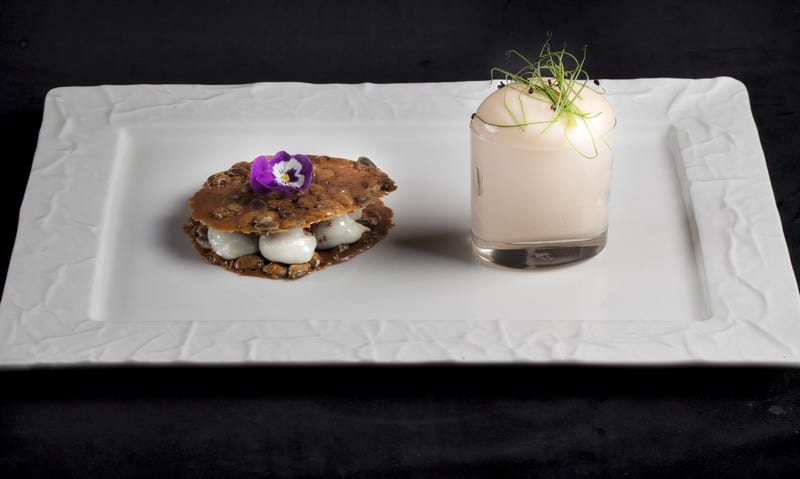
Gorgonzola is the probably the most famous Italian blue cheese. Dating back to the early Middle Ages, many cheese makers around the world have attempted to imitate Gorgonzola, but have had little success, being unable to replicate the balance of moulds found in the ripening caves typical of the Gorgonzola area. Made from whole cow’s milk, ‘zola can be buttery or firm, or crumbly and spicy according to age, and streaked with pronounced marbled blue veining. This cheese is also a key ingredient in Italian cookery, often melted into risotto or polenta.
Mascarpone is a triple-cream cheese, or more accurately a lightly whipped cream, and not a cheese at all. The white to straw yellow creamy, mild fresh cheese is compact, but supple and spreadable, and it is the main ingredient for tiramisu.
Taleggio is a popular semi-soft, washed-rind cheese from the Val Taleggio area of Lombardy. Stinky, soft and with a traditionally pinkish-grey rind, Taleggio squares conceal a white, supple and aromatic interior. Its characteristically aromatic nose is however mild on the palate, featuring tangy, meaty notes with a fruit-forward finish. The texture is moist and oozy with a very pleasant melt-in-your-mouth feel. It’s recorded that the celebrated Italian libertine Giacomo Casanova (1725-1798) took Taleggio before bedding his conquests on account of its reputation as a subtle aphrodisiac.
The regions touched by water, i.e. the Veneto lagoons and the rocky coastlines of Liguria and Friuli Venezia Giulia, equally own a staggering variety of local cheese products.
Asiago, for example is a cheese that changes texture with age, going from smooth in the fresh variety, to crumbly in the stravecchio version. Delicate, nutty products like Asiago – which is a distant cousin of full-flavoured Swiss Emmenthal and French Comté – are produced with thick, rich milk from cows that graze on lush, mountain pastures of the Vicenza province. Like many other DOP cheeses, Asiago holds certification by a dedicated consortium, which ensures that the cheese is produced according to certain guidelines and thus meets high quality standards.
Bruss is a fermented sheep's product native to Piemonte and Liguria. What makes the fermented cheese creamy and aromatically potent is a generous splash of grappa. The texture is crumbly and slightly grainy. The aroma is delicate and becomes more pungent the more the cheese is aged. The bold nature of the cheese is further noted in the local proverb, “Only love is stronger than bruss.”
Montasio is a semi-aged Alpine cheese made with unpasteurized cow’s milk, typical of the Friuli Venezia Giulia and Veneto regions. The pleasant aromatic baggage is further noted in the fruity, grassy, mild and nutty palate. Wine-friendly Montasio is the key ingredient in the typical Friuli recipe, frico.
Central Italian cheeses
The centrally located regions of Emilia-Romagna, Tuscany, Umbria, Abruzzo, Lazio and Marche focus their cheese production on prime cow’s milk products – the most renowned being Parmigiano – as well as delectable ovine and goat milk cheeses. Here are a few local highlights.
Caprino is the broad term under which all fresh, soft creamy goat cheeses traditionally come together. The name derives from the Italian word for goat, capra. The two major styles of caprino are fresco (fresh) and stagionato (ripened). Italian caprino producers still prioritize tradition and the artisan technique of hand-ladling the delicate curd into tiny moulds, and working only with fresh, unpasteurized goat’s milk. Bizarre how goat’s milk cheeses are the opposite of cow’s milk ones: the longer they're aged, the more approachable they tend to become. Some caprini are buttery and mellow, with hints of lemon, while firm, aged and rinded varieties offer flavours of nut hull and cooked milk that are much more subtle than the younger cheeses, which are more piquant and goaty.
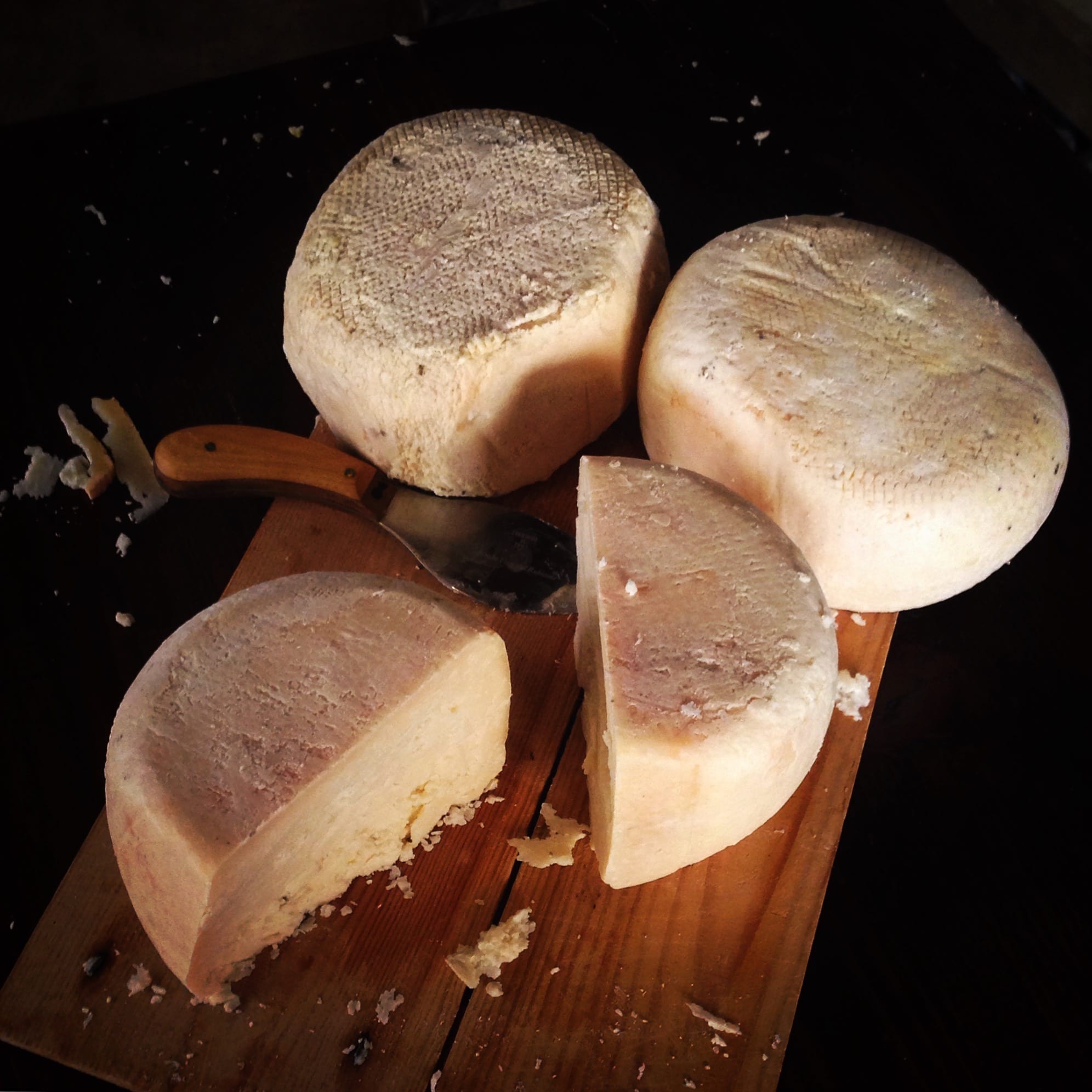
The humble origins of Formaggio di Fossa have in no way impaired its popularity, to the contrary. The ancient product is native to the small town of Sogliano al Rubicone in the region of Emilia-Romagna. Formaggio di Fossa is a classic “mixed” cheese, made with equal parts of sheep’s milk and cow’s milk. The cheese ripens for three months in dark air-tight stone pits lined with straw: the four main oval pits of Sogliano are 14th century granaries, carved 9 feet deep and 6 feet wide in natural volcanic limestone. Others were simply a place to hide goods during barbaric invasions. The cheese wheels, packed tightly in white canvas sacs are still buried in the pits during the last week of August and exhumed at the end of November during the official established date of November 24th, eve of the local patron Saint day, Santa Caterina.
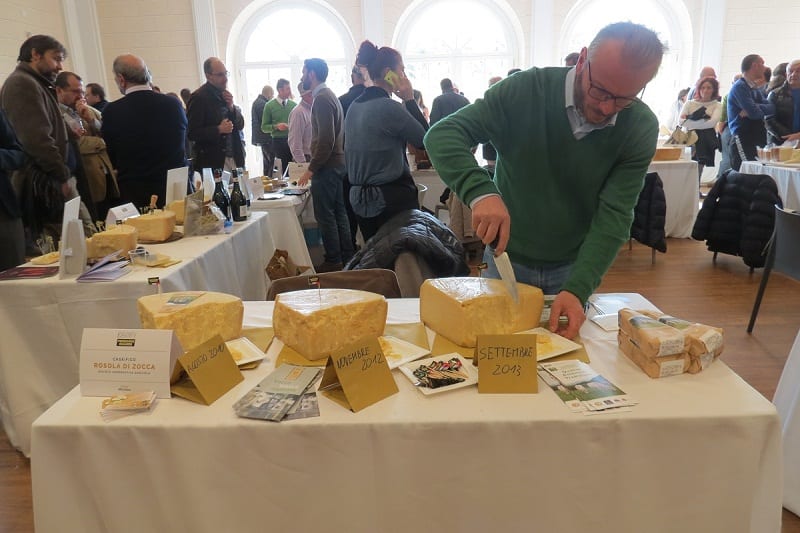
Parmigiano is the most well known Italian product worldwide. The unpasteurized cow’s milk is transformed into curds that are cut into tiny bits and heated to extremely high temperatures in large copper vats. The formed wheels of Parmigiano aren't pressed, and are left to soak in a salt-water bath for several weeks. The cheeses are aged for 1 to 2 years—the longer they age, the drier and more crumbly they become, with a minimum of 18 months for the grating kind. Parmigiano’s one-of-a-kind texture is compact, crumbly and yet soluble. The aromatic baggage of Parmigiano are reminiscent of the pasture that the cows feed on, the nutty, cooked milk flavour has a fine umami and tropical pineapple finish.
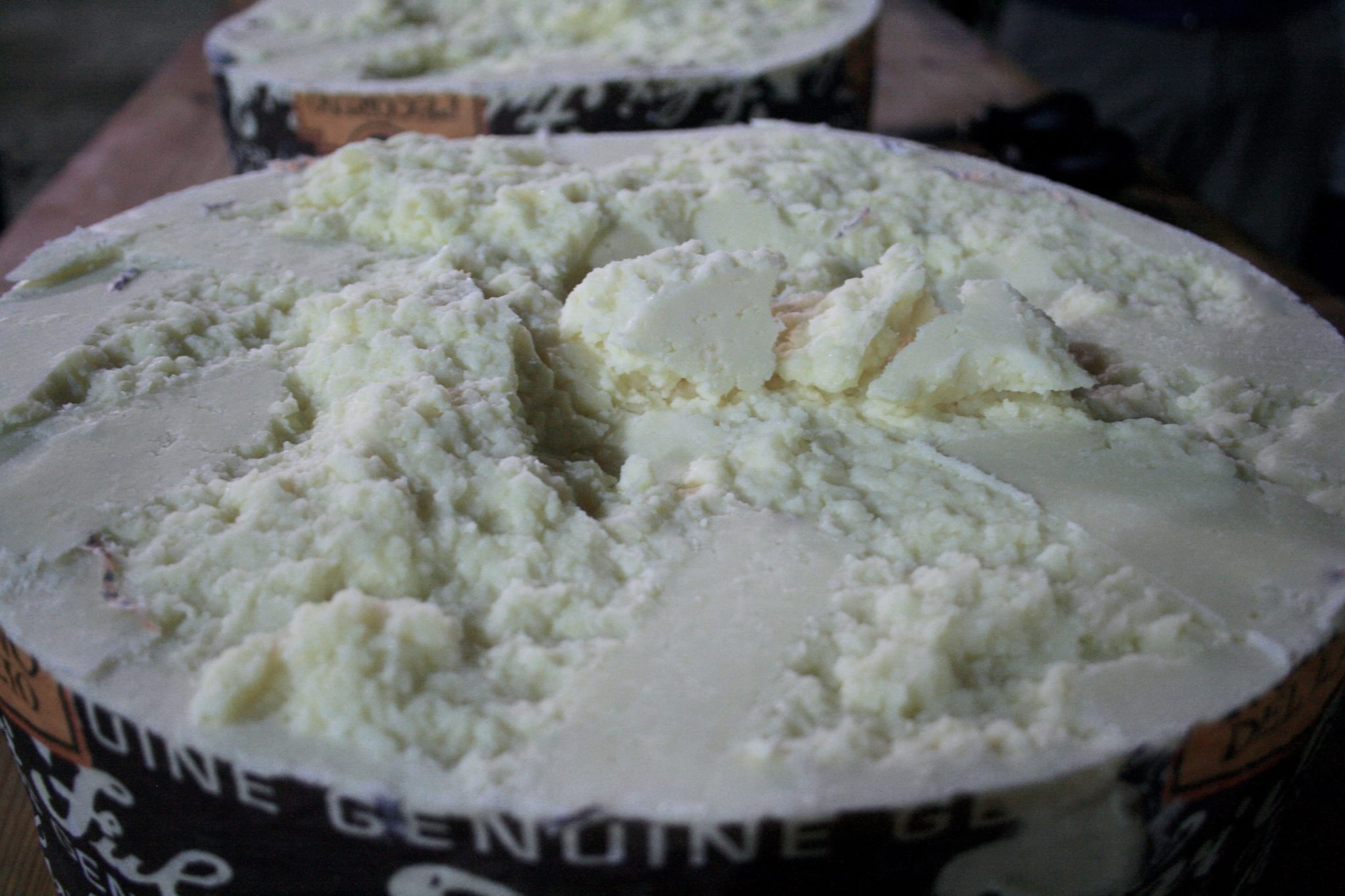
Pecorino is a testament to southern Italy’s ancient past. Sheep’s milk cheese was first made roughly 2,000 years ago in the countryside surrounding Rome. Its distinctive strong, salty flavour is preferred for the savoury pasta sauces of cucina romana, such as Amatriciana, Carbonara, Cacio e Pepe and Gricia. Pecorino is the worthy companion of fava beans – think Roman springtime fave e pecorino combination – and full-bodied red wines. The many pecorino varieties differ according to region and production method. Opulent and sometimes tangy, sheep’s milk cheeses range from subtle, sweet, caramelly and approachable, to tart and briny, to spicy and downright gamey.
Ricotta is a fresh cheese whose name literally translates “re-cooked”. It is grainy and lumpy white in appearance, slightly sweet in taste, and incredibly creamy on the palate. Sheep’s milk ricotta is a favourite component of many Italian desserts. In Italian households ricotta is often beaten smooth and mixed with sugar, cinnamon, cocoa or occasionally chocolate shavings, and served as a delicate dessert. This basic combination (often in addition to candied citrus and pistachios) also features prominently as the filling of the crunchy tubular shell of the Sicilian cannoli, and layered with slices of sponge cake in Palermo’s typical cassata. Combined with eggs and cooked grains, then baked firm, ricotta is also a main ingredient in Napoli’s pastiera, one of Italy’s most famous Easter desserts.
Squacquerone and Crescenza all belong to the same cheese type. These are soft-ripened cow’s milk cheeses with no rind, produced in Emilia-Romagna. They are buttery with a rich, slightly tart flavour. These spreadable cheeses are eaten very young, and their soft, creamy texture and normally mild and delicate character make them very versatile and digestible. These are normally produced in square shapes, and wrapped in moist paper. On the Adriatic coast, typical piadina unleavened bread, is daubed with squacquerone and constitutes a mainstay of the local food industry.
Southern Italian cheeses
The southern land-locked region of Basilicata, and in the small Southern Italian regions of Molise, Campania, Puglia, Calabria, and the islands of Sicily and Sardinia, strong ties to an agrarian past translate into a superlative variety of local cheese products.
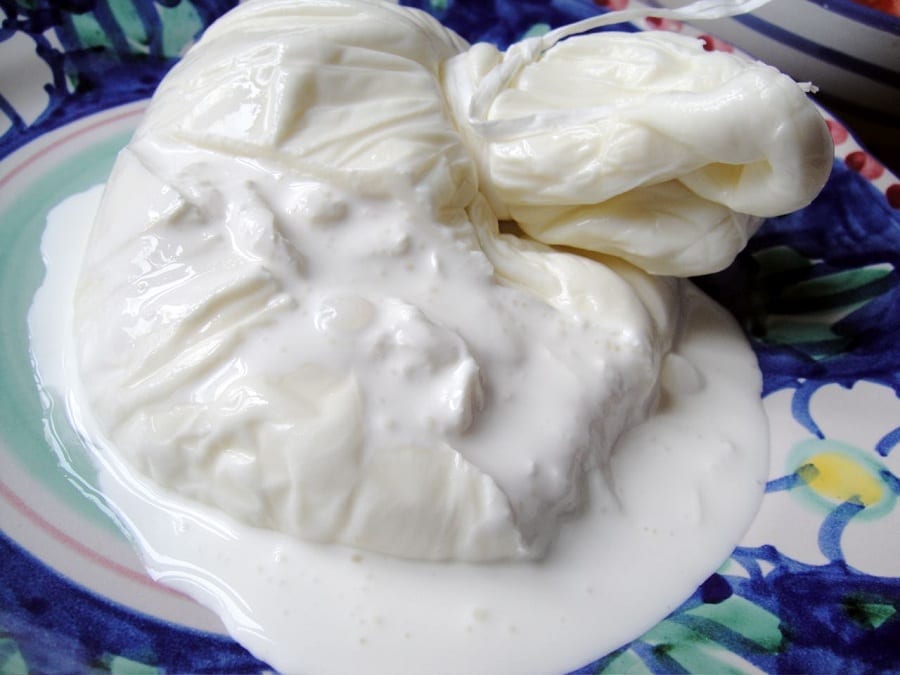
Burrata is a divinely decadent fresh cheese, made from mozzarella and heavy cream. The outer shell is solid mozzarella, while the inside contains both shredded mozzarella and cream, giving it a unique pulpy texture. It is usually served fresh, at room temperature. Cutting through a fresh new burrata and the witnessing the soft shredded pulp oozing out, is a truly mystic experience. The aroma is of fresh milk, on the palate; lush burrata is grassy, briny with a tender, creamy and never chewy mouth feel.
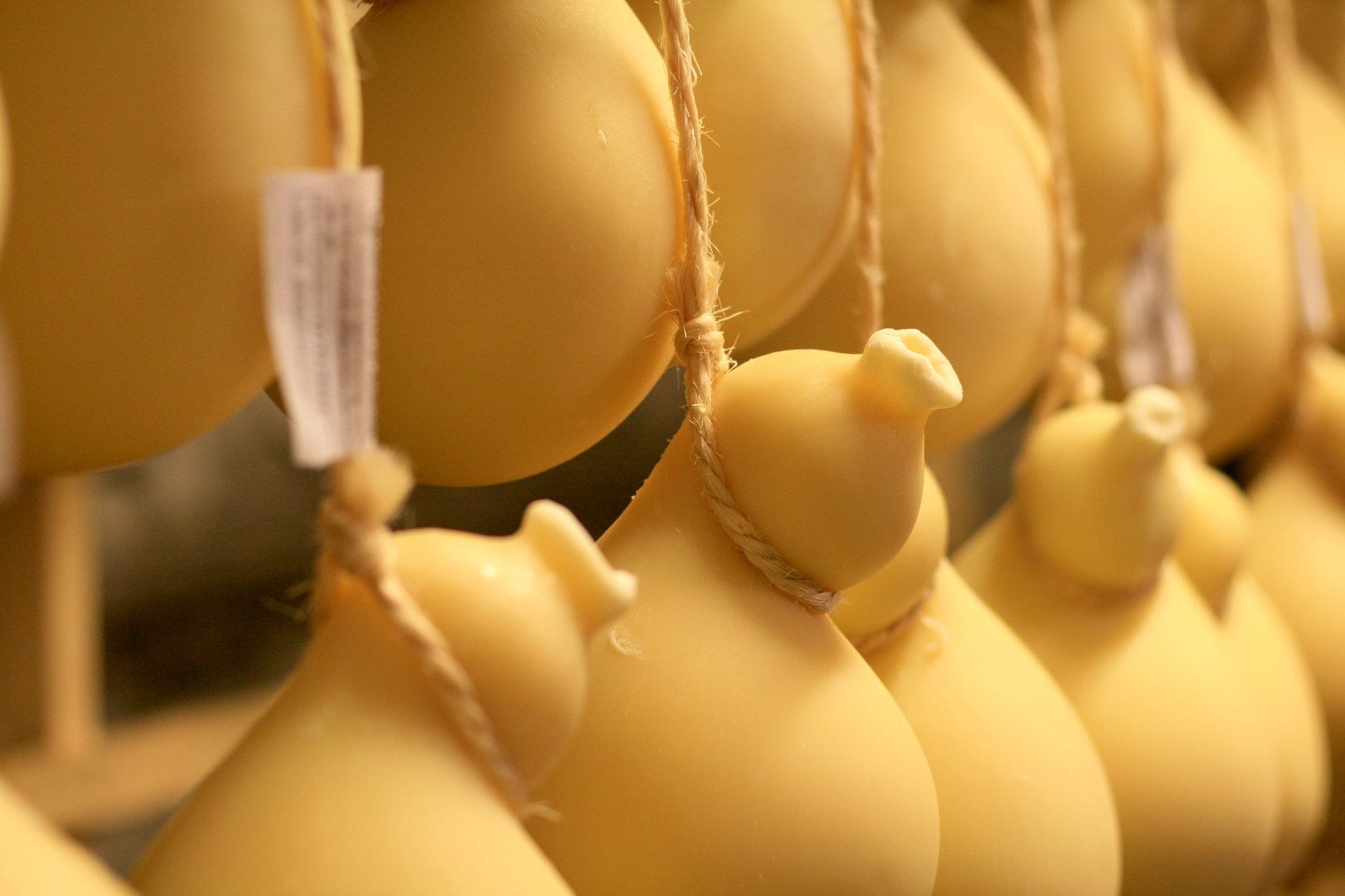
Caciocavallo is a semi-hard stretched-curd cheese made all over the Italian south. Among the most prized caciocavallo is Caciocavallo Podolico, one of the most aromatic aged cheeses in Italy. Made with the milk of Podolica breed cows, it’s extraordinarily suited for long aging. It takes on unique sensory characteristics after 6-9 months: notes of cut grass, bitter flowers, vanilla and spices.
Another notable caciocavallo is the Agerolese cow breed’s Provolone del Monaco cheese, which is called ‘provolone’ because of its ties to the ancient cheese making tradition of Caserta (where provolone originates). Later transplanted to the Sorrento peninsula, the cheese has nothing to do with northern Italian provolone. Concealed under a thin, hard golden to thick, crusty rind, the flavour of caciocavallo varies greatly according to age, from sweet like butterscotch, to piquant and savoury, with an herbaceous aftertaste.
Casizolu is an ancient, highly prized, stretched-curd cow’s milk cheese made traditionally in the Montiferru area of Sardinia. In the past it was traditionally made by women, who processed the fresh milk, stretching the curds in hot water to form the cheese’s typical rounded pear shape. When the cheese is aged for longer than 2-3 months, it starts to release green, grassy, buttermilk notes with hints of wet forest and a slightly almondy finish. Available only late fall through early summer, following the natural lactation period of the free range, grass fed 'sardo modicane' and 'bruno-sarde' cows.
In a particular delicacy made in the Nuoro province of Sardinia called Casu Marzu, the maggots of the cheese fly Piophila casei are intentionally introduced into the pecorino by the cheese maker; as they eat their way through the body of the cheese, it turns it into an extremely tangy, aromatic cream. Not for the faint of heart.
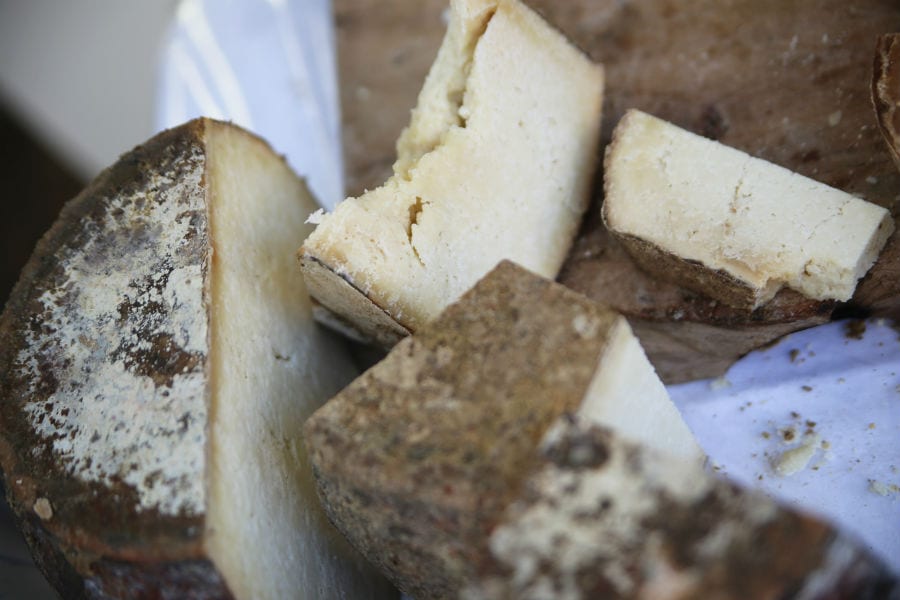
Authentic Fiore Sardo is made only from Sarda-breed sheep and needs to dry near a blazing brazier for two weeks. When the cheese has reached the appropriate aging, the rind is regularly washed with a mixture of wine vinegar, olive oil and salt, and the wheels are turned frequently. There are two theories about the origin of the name fiore, which means flower: the historic use of cardoon flowers soaked in water for rennet, or from the flower carved at the base of the wooden moulds once used to shape the cheese. The rind is natural, golden-yellow to dark brown and has a sour, damp smell. The interior is hard and grainy, and owns a rich caramel sweetness, salty tang and a hint of fruit.
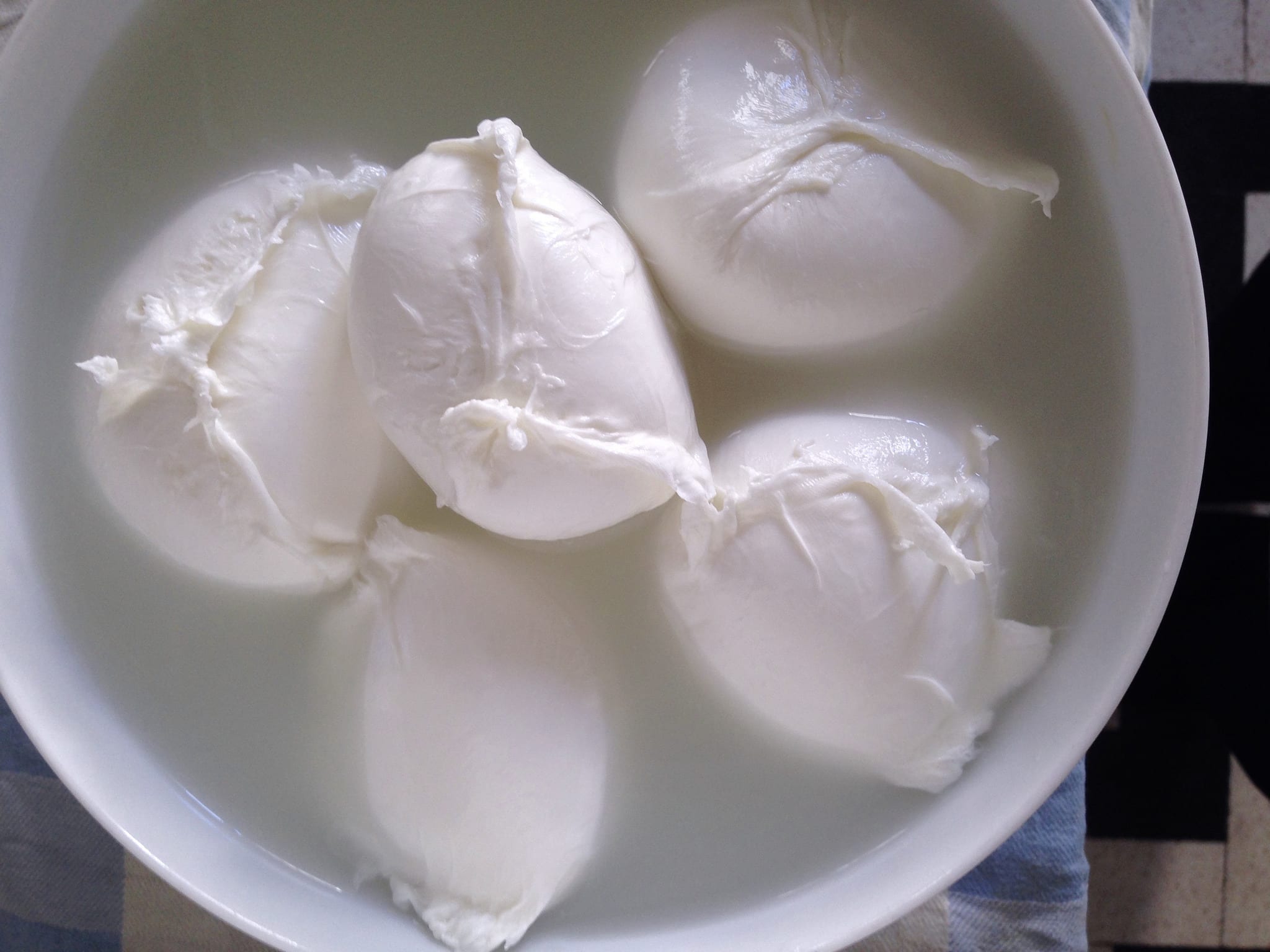
Mozzarella is a fresh stretched curd cheese made with cow’s or buffalo milk. The different kinds of mozzarella available are: a) mozzarella di bufala, made from water buffalo milk, which in Europe is sold as mozzarella di bufala campana; b) mozzarella fiordilatte, made from fresh pasteurized or unpasteurized cow’s milk; and c) smoked mozzarella otherwise known as provola affumicata.
Mozzarella comes in all shapes and sizes, from bite-size cherry morsels, to the 1lb Aversana ball, or the interlaced bufala treccia, or “braid”. The texture is milky, tender and mild, with a faint layer of cream beneath the porcelain white skin that gushes a little when sliced. On the palate, the moist mouthful is a pleasant twang of sour cream undercutting pure, rich cream notes. Never store it in the fridge!
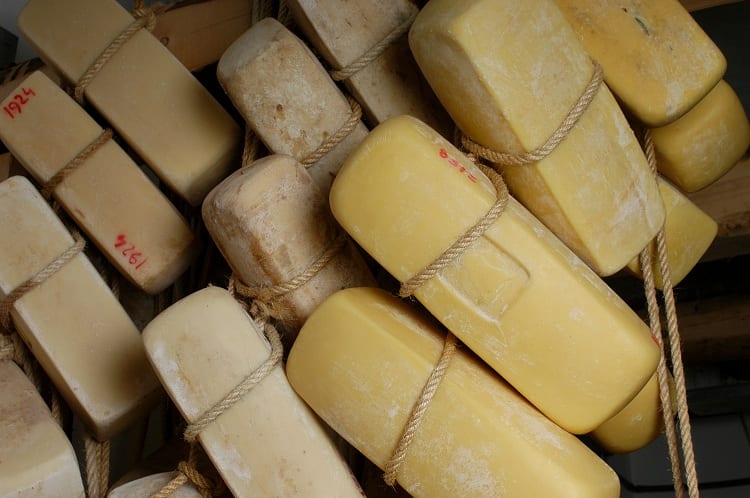
Ragusano is a hard stretched curd cheese, like mozzarella and caciocavallo, and one of Italy’s favourites produced on the island of Sicily. It comes in the shape of a brick and it is made from non-pasteurized cow’s milk. The curds are chopped, and then stretched using boiling water into a perfect sphere with no cracks. The transformation from a sphere to a parallelepiped happens thanks to the ‘mastredda’, wooden boards where the cheese is placed and then moulded with heavy wooden blocks. It is hanged to the ceiling of cool cellars and, after a few months, the shiny rind takes on a golden colour and starts releasing scents of Mediterranean shrubs and orange blossoms.
When fresh sheep’s milk ricotta goes through its natural aging process, becomes hard and pungent it becomes Ricotta Salata, a product that’s suitable for eating as is or for grating over pastas, such as pasta alla Norma. In the traditional Sicilian dish from Catania ricotta salata is sprinkled over savoury pasta dressed with zingy eggplant and tomato sauce and plenty of fresh basil.
by Eleonora Baldwin

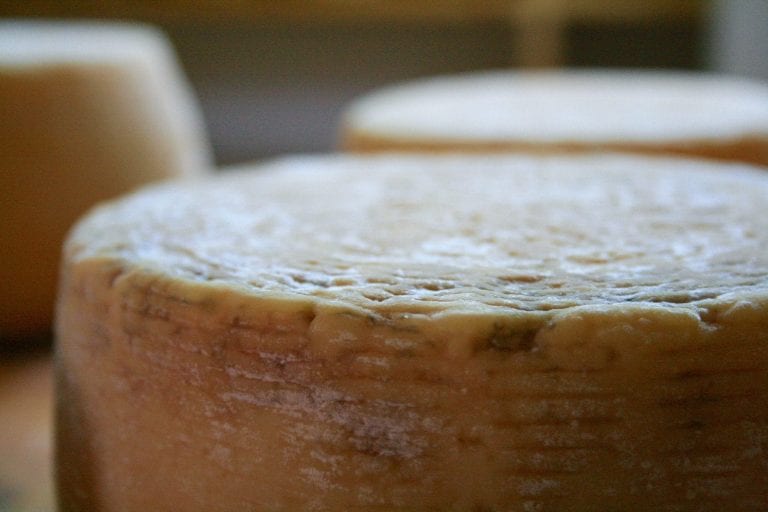
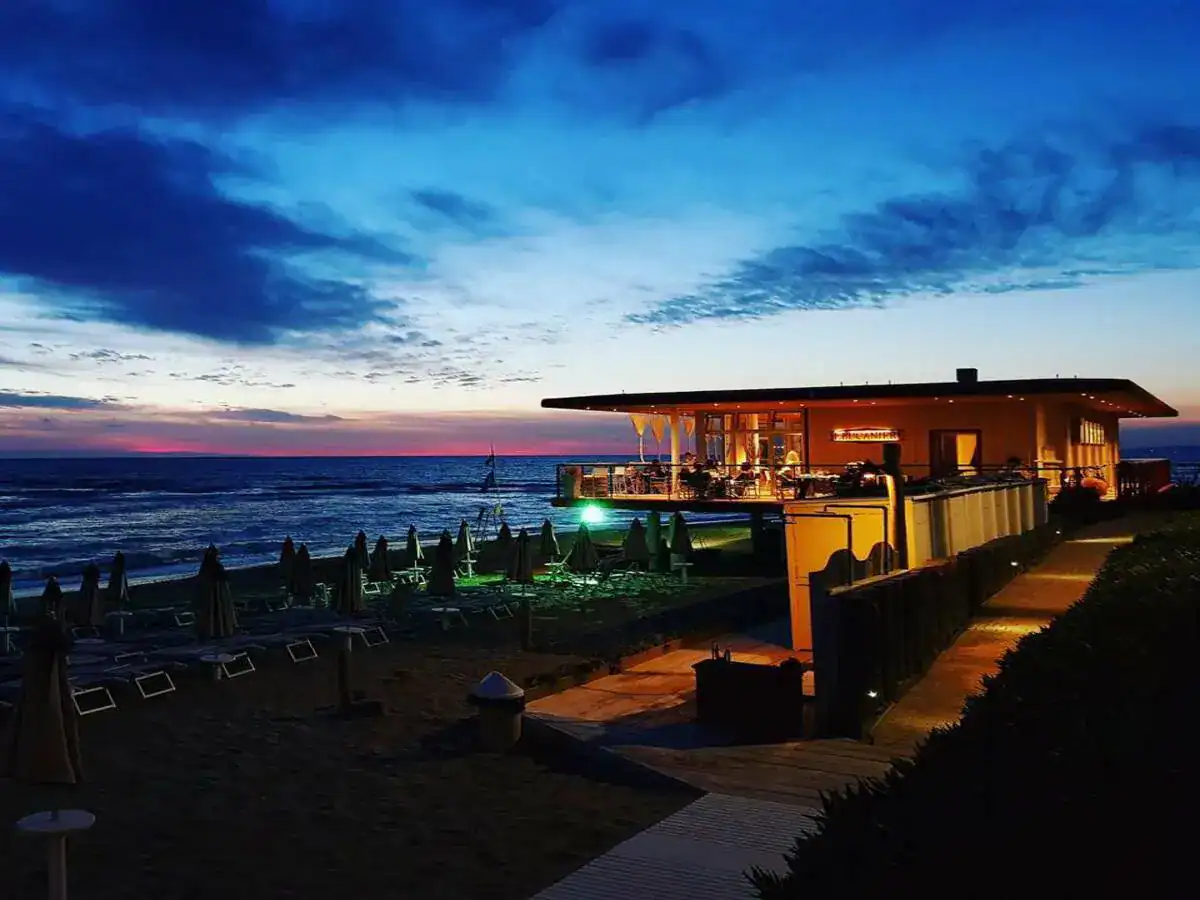 Eating by the sea in Tuscany. The best beachfront restaurants selected by Gambero Rosso
Eating by the sea in Tuscany. The best beachfront restaurants selected by Gambero Rosso Contemporary cuisine, farmhouses and pinewoods. The hidden restaurant in the nature park near Como
Contemporary cuisine, farmhouses and pinewoods. The hidden restaurant in the nature park near Como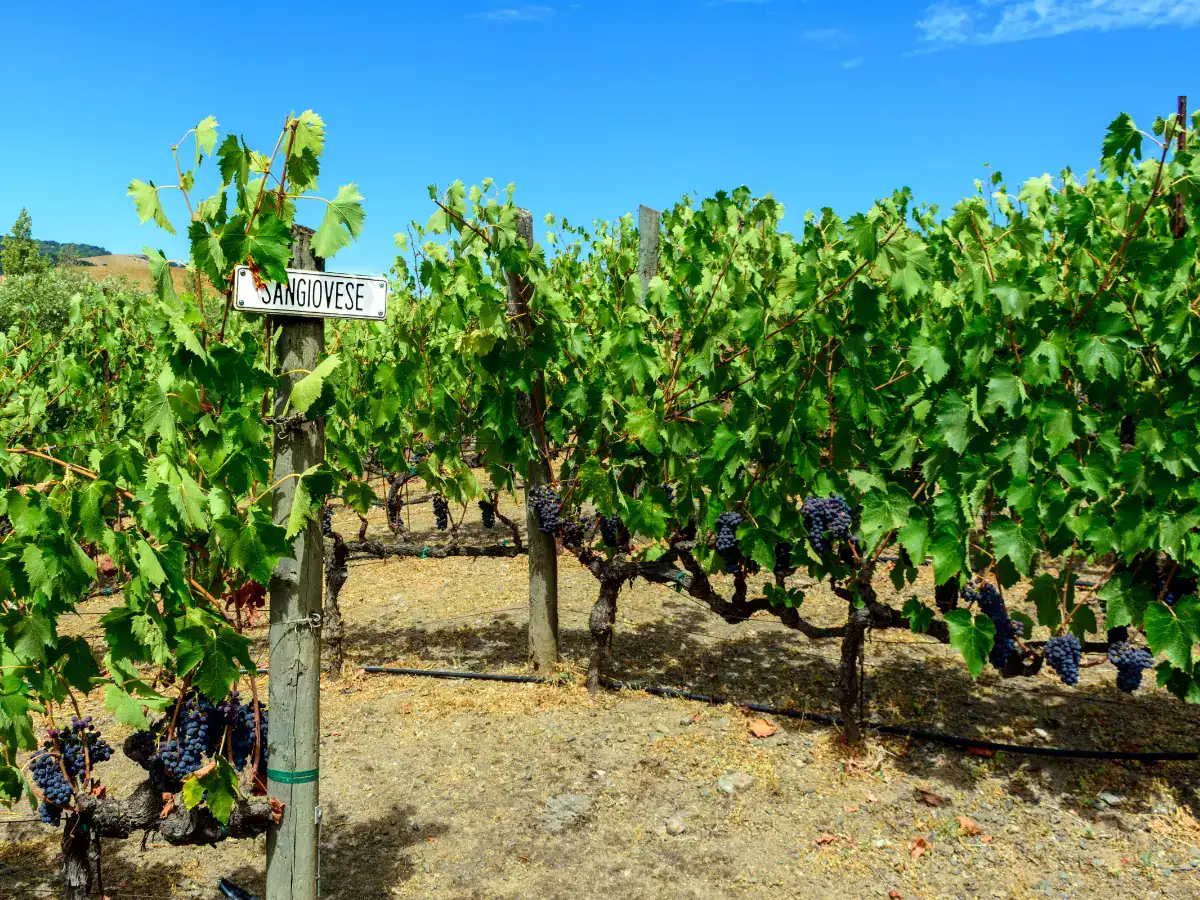 California rediscovers Sangiovese. A brief history of the revival of a forgotten grape variety in the United States
California rediscovers Sangiovese. A brief history of the revival of a forgotten grape variety in the United States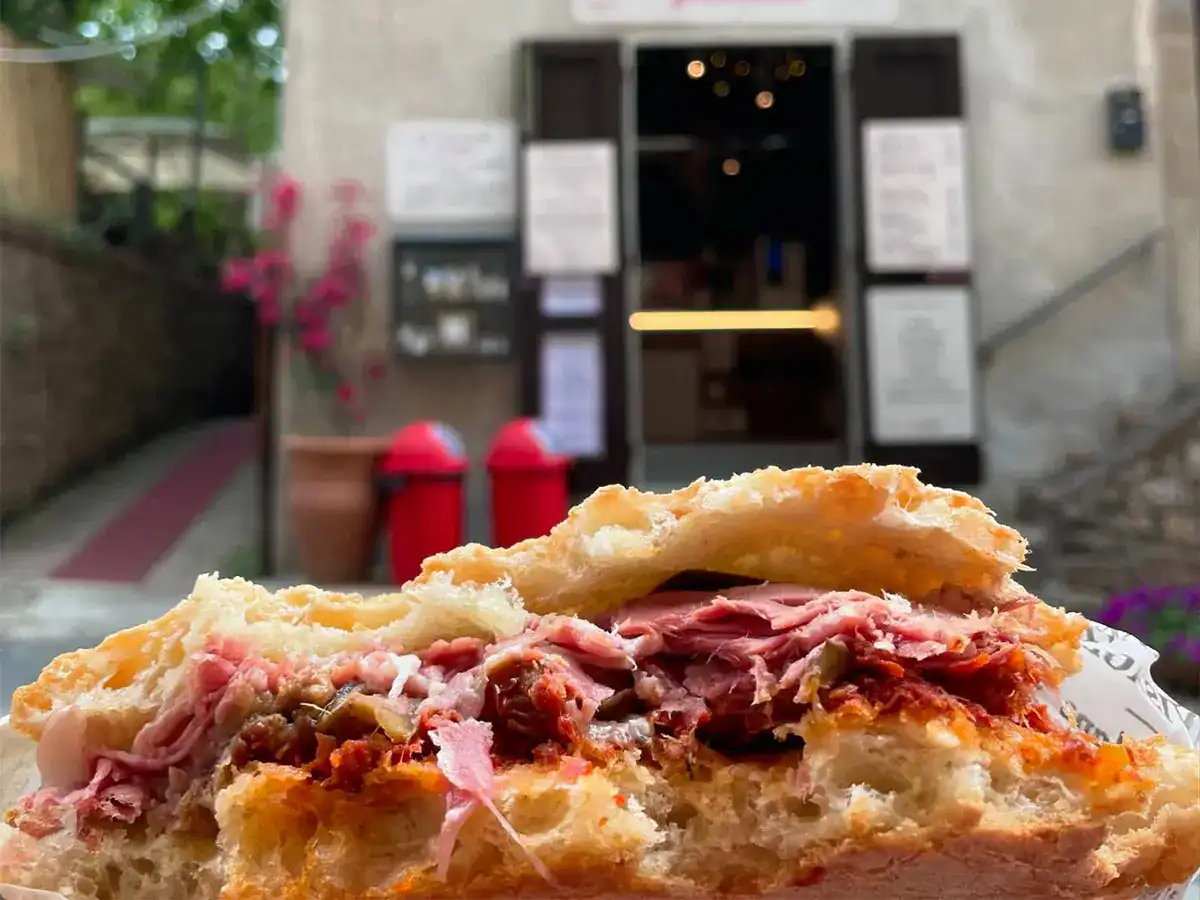 There’s a small shop in Tuscany making incredible stuffed sandwiches and focacce
There’s a small shop in Tuscany making incredible stuffed sandwiches and focacce Gourmet maritozzi, Ascolana olives, and suburban pastrami: the unmissable street food of Italy
Gourmet maritozzi, Ascolana olives, and suburban pastrami: the unmissable street food of Italy
